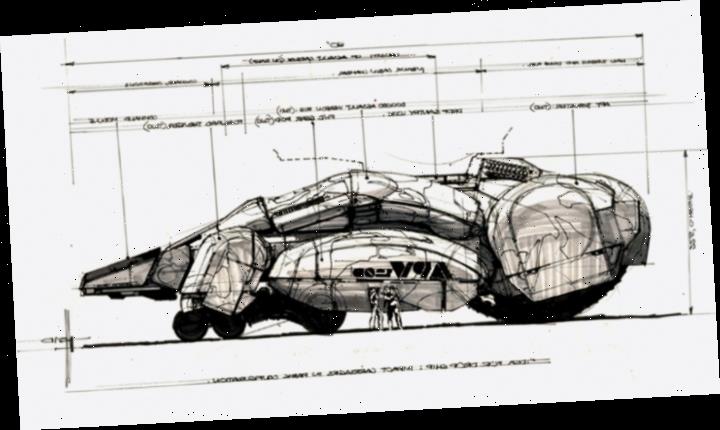The spinner police car in 1982’s “Blade Runner,” the light cycles of “Tron,” “futuristic Las Vegas” in “Blade Runner 2049” and the “USS Sulaco” in “Aliens” are indelible images of cinema, all from the imagination of the late Syd Mead, who died last month at the age of 86. You might not be aware of his name, but you’ve seen his work.
Mead was the mastermind concept artist and illustrator who played a pivotal role in designing the futuristic world of films and transportation in many blockbusters.
He graduated from the Art Center School of Los Angeles (now the Art Center College of Design), and began his career creating concept cars for Ford in its advanced styling center.
Not long after that, Mead would soon move into the world of film, where he could fully realize his futuristic vision.
Mead made his film debut in 1978 on “Star Trek: The Motion Picture” as the film’s production illustrator. He created the V’Ger entity that is the lynchpin of the film.
In his illustrations for “Star Trek,” Mead incorporated bands of light and other lighting effects, as well as smoke filters. All those features would become the signature to recognizing his work.
Popular on Variety
His concepts — channeled through his fertile imagination and sense of color and composition — influenced the way the future is depicted in films.
Nicknamed the “artist who illustrates the future,” Mead once said, “I’ve called science fiction ‘reality ahead of schedule.’ ”
Ridley Scott’s 1982 sci-fi drama “Blade Runner” would be Mead’s most influential work. The “Blade Runner” world and Mead’s illustrations were signature Mead: Strong backlighting, smoke, rain and contrast gave the film its slick and dystopian look while maintaining Scott’s intent to make a sci-fi film noir.
Months of conversations among Mead and the film’s production designer Lawrence Paull and art director David Snyder led to the onscreen world of “Blade Runner,” set in 2019 Los Angeles as a mix of cyberpunk neon lights reminiscent of Tokyo and Hong Kong.
The film’s design also depicts environmental collapse, extreme socioeconomic divisions and flying cars.
The film’s look was instantly iconic, and the marriage of the production’s aesthetic and groundbreaking cinematography still influences directors and designers.
Mead would revisit the “Blade Runner” world again 35 years later in “Blade Runner 2049.” Director Denis Villeneuve wanted Mead to create a post-apocalyptic Las Vegas this time.
Famous Vegas landmarks, such as the MGM Grand and Luxor, remain in his world, while Mead maintained the original aesthetics of the 1982 film.
Another enduring franchise that Mead worked on was “Aliens.” In 2014, he told Empire magazine: “I got the script FedExed to me by Jim Cameron, and he’s a great writer. I started designing the Sulaco on a plane journey. I did some of the interior sets too, like the cafeteria and the egg chamber. In Ridley’s movie the ship was like an industrial oil derrick going through space. It was very gritty and real. Cameron wanted to do more a sort of Rambo-in-space. The path that I took was from a sketch that Jim gave me. The Sulaco had to be more or less flat, because he was going to run the camera past it fast and he didn’t want to have to pull focus, because it would be messy. I made it into a massively armed freight carrier. That’s what drove the design.”
Mead’s legacy is his vision and his influence on Hollywood.
Source: Read Full Article
